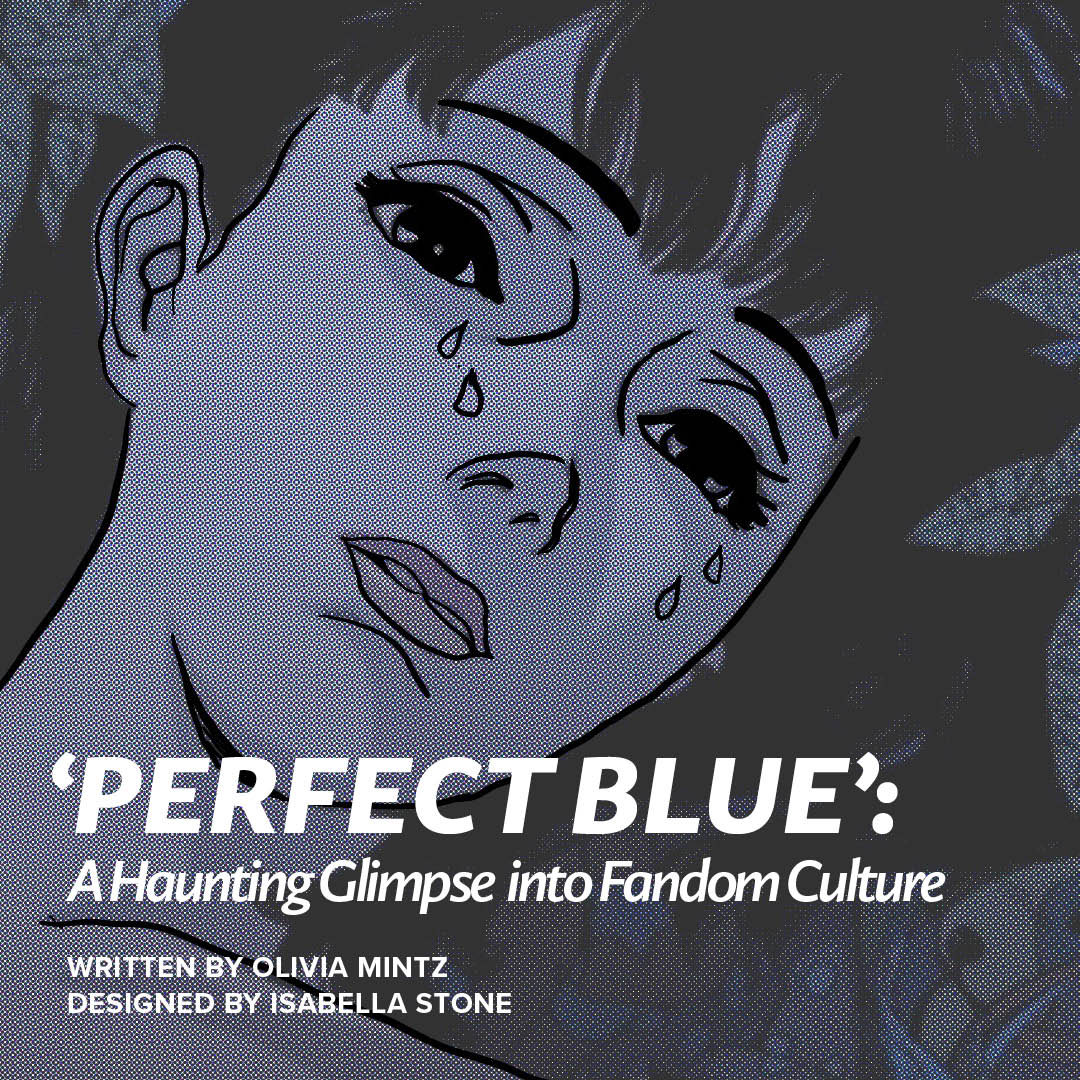
Directed by the critically acclaimed Satoshi Kon, “Perfect Blue” is a Japanese animated psychological thriller film. The film follows the story of a Japanese pop star turned actress and model named Mima Kirigoe navigating her new career path and personal image. While Mima is undergoing this transition, a super fan becomes her stalker and she slowly loses her grip on reality. As a monumental piece of cinema that has inspired modern psychological thrillers like “Requiem for a Dream” and “Black Swan,” “Perfect Blue” was brought back into theaters on September 6, 7, and 10 to celebrate the 25th anniversary of the film.
At the beginning of the film, Mima announces her retirement as a pop idol from her girl group, CHAM! As the favorite of the group, many of her fans plan to support her endeavors as an actress and model but are afraid of Mima losing her good-girl image. One fan, known as Me-Mania, is the most reluctant to accept Mima’s new lifestyle and develops an unhealthy obsession with her. In addition, Mima’s manager Rumi is hesitant about this career switch because she regrets leaving the spotlight as a former pop idol. Throughout the course of the film Me-Mania and Rumi become violent toward Mima as they begin to act like crazy fans.
Though this film takes place in the ‘90s when the internet was slowly becoming more accessible, the social commentary about fan culture through social media is a semi-accurate depiction of the extremes that can occur to public figures. Mima is depicted as an innocent and friendly person, making her easy to idolize by many. Initially, Me-Mania runs a fan page for her called “Mima’s Room” that outlines every part of her day in great detail. This is similar to fan accounts on Instagram that try to impersonate celebrities by replicating their typical speech patterns and daily habits. Because of this creepily accurate depiction of her life, Mima feels pressured to remain perfect and unbothered. This part of the movie also speaks to the parasocial relationships that are built between celebrities and their fanbase. As celebrities gain more exposure on social media, fans believe that they know more about an idol’s personal life and act as if they know the idol personally.
Throughout the film, Mima is constantly targeted because of her changing image. For instance, she receives a letter from one of her fans that explodes. Even though it was her manager who opened the letter for her and got injured, this displays the problematic behaviors fans pull when their favorite celebrity engages in behavior that they don’t like. Along with the letter, Mima receives death threats and hate emails from fans because they are not ready to let go of her old image. Though harmful, some of these behaviors have been replicated in the real world as many celebrities have had stalkers with the intent of physically harming them. Though this happened around the same time “Perfect Blue” was in production, Icelandic singer Björk was met with a similar fate as she received a letterbomb filled with acid.
This film further establishes the idea that when it comes to having a public identity, it is hard to keep your life private. As shown by Mima’s stalker and the blog that chronicles her daily routine, anyone who pays attention to her life knows everything about her. This can be dangerous as the movie showcases the negative aspects of having a public profile. Since so many people know important details about her life, her safety is threatened, her mental health declines and she lives every day in fear. With all of this attention, Mima begins to spiral and lose track of what she actually knows her life to be.
“Perfect Blue” is on the nose in terms of its representation of social media’s impact on celebrities and fans alike. Though the film blurs the line between reality and Mima’s imagination when she has paranoid visions, the film is a cautionary tale about how being in the public eye can be perilous.